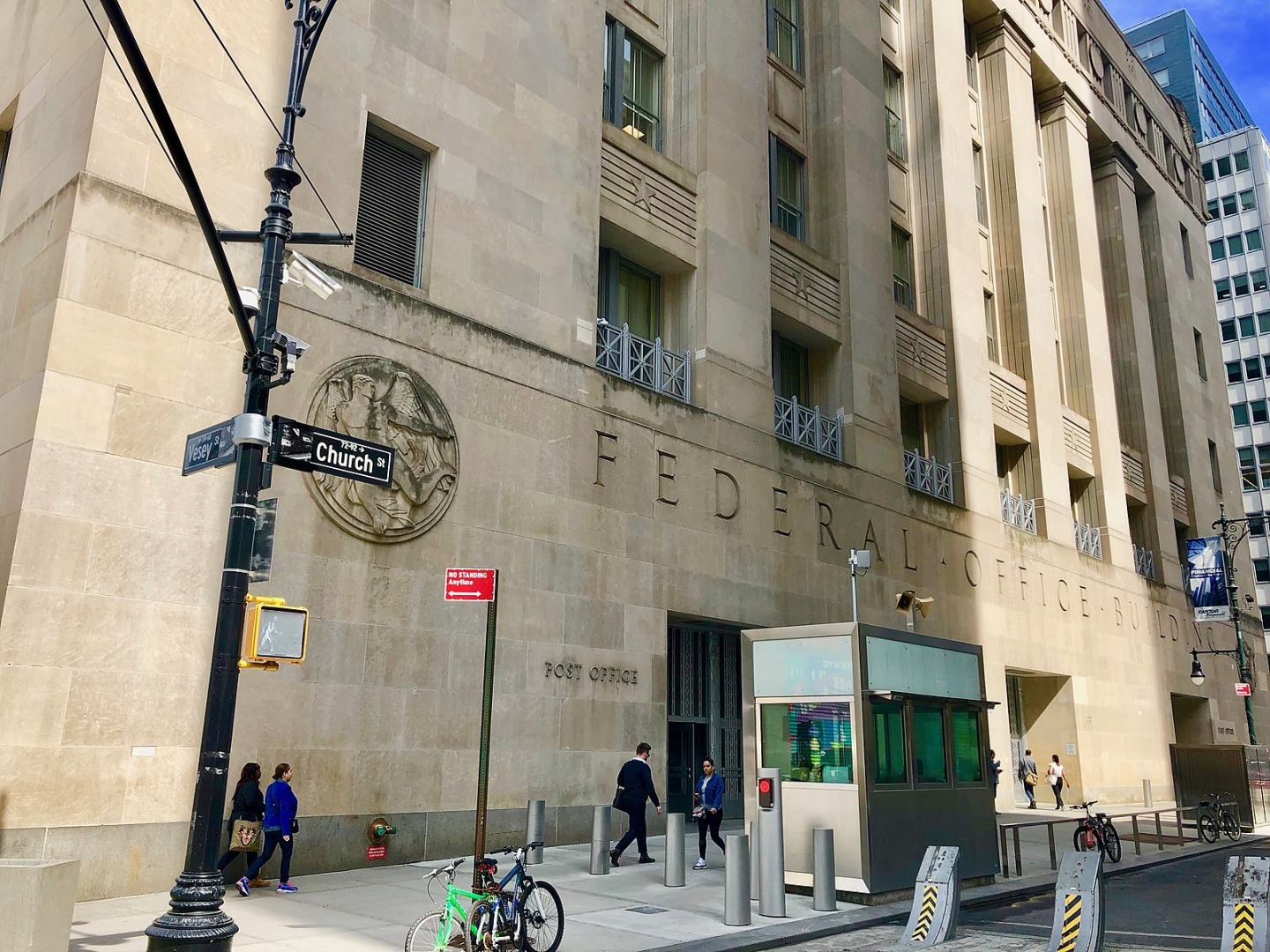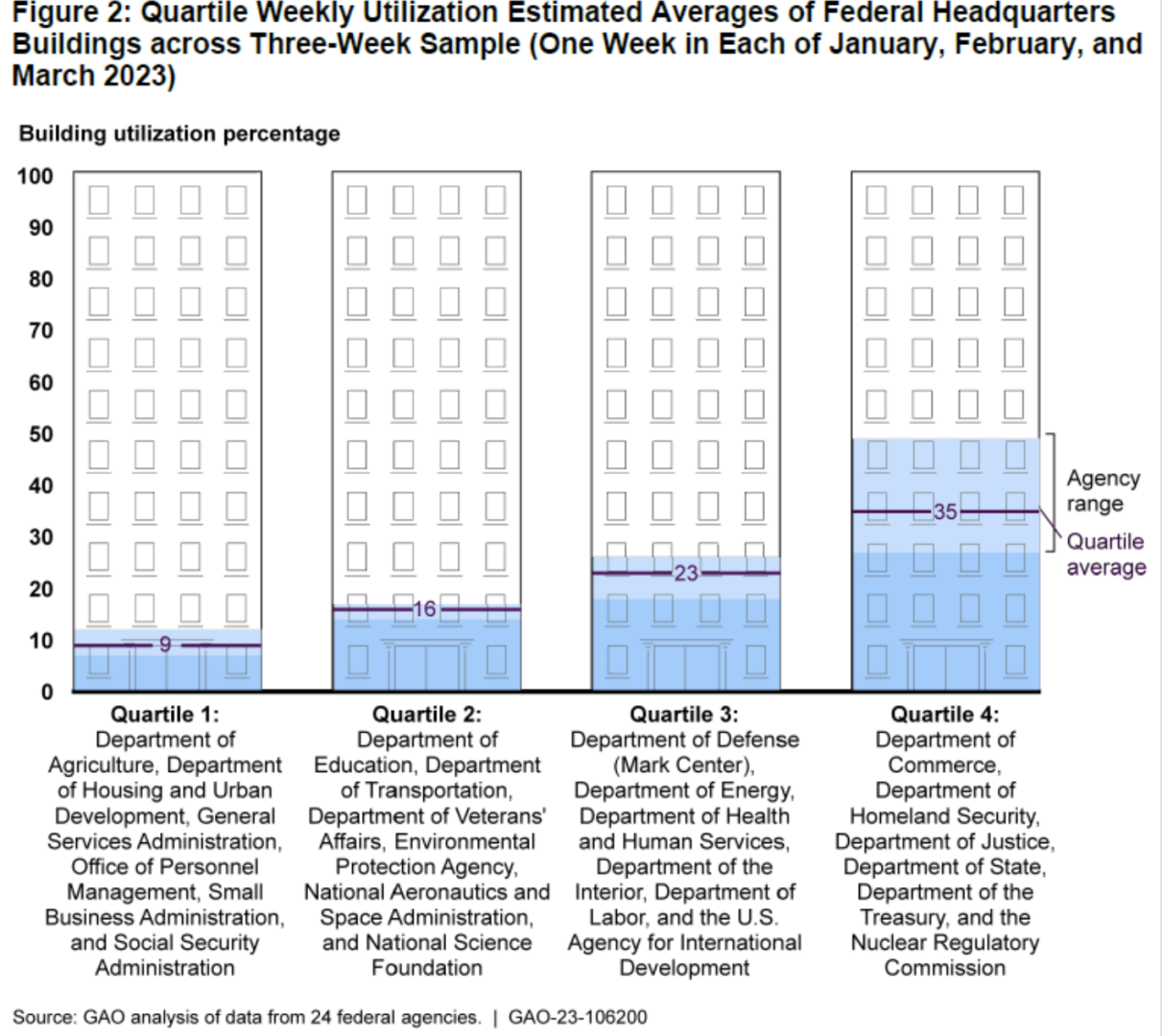Comments
- No comments found

All over the country, cities are grappling with the issue of empty office space. Will the workers come back?
How will local businesses that depend on commuters be affected? Should the office space be reused or repurposed in some way? When it comes to office space, the federal government offers a vivid example. It owns 511 million square feet of office space, along with leasing additional space from private firms. Total office space in Manhattan is about 460 million square feet, which is about 11% of the nation’s office space–and the federal government owns more than that.
The federal government already had excess office space 20 years ago. Now in the work-from-home post-pandemic environment, federal office buildings are about 25% occupied as of earlier this year, according to a report from the US Government Accountability Office (“Federal Real Property: Preliminary Results Show Federal Buildings Remain Underutilized Due to Longstanding Challenges and Increased Telework,” July 13, 2023).
The GAO surveyed federal office buildings for a week in January, again in February, and again in March of this year. It then calculated how fully the buildings were being utilized. The median building was 25% occupied. Here’s a graph showing the breakdown across 24 major agencies. In the lowest quartile, federal agencies are using less than 10% of their space.

Some of the costs here are financial. The GAO estimates that these federal agencies spend about $2 billion annually on operation and maintenance of buildings they own, and an additional $5 billion on leasing space. But of course, any economist will tell you that just because some government-owned office building has been sitting there for decades, its “cost” is not zero: instead, the opportunity cost of the building is what that building or that space could be used for instead.
In a broad sense, the federal government and the city of Washington, DC, faces a challenge and an opportunity similar to that of cities throughout the country: What should happen with all this extra office space? Hotels? Theaters and entertainment? Commercial? Convert to housing? Or just wait and expect that, in a year or two, the workers will be back?
The federal government faces particular problems here. A number of the under-utilized buildings are giant government-owned structures. Many of them are “historical,” both in the sense that a major teardown would face difficult bureaucratic hurdles, and also in the sense that they have old plumbing, electrical, and HVAC systems. Getting a bureaucracy to give up some of its space is hard: getting it to share space may be harder. Funds aren’t readily available for redesigning and reconstructing the space. These issues have been evident for decades. But then add that many government jobs are also well-suited to work-from-home at least part of the time, and commuting in the DC area can be beastly, and it seems unlikely that the glut of government-owned office space is going away on its own.
In DC, as in other cities, it feels as if there needs to be an acceptance that work-from-home or remote work in some form is here to stay, at least to some extent, and so a lot of existing office space is obsolete. However, in most cities there does not seem to be much activity in creating a positive vision of what might take the place of all this empty office space, and how this new vision would shape the future of neighborhoods and the city itself.
Timothy Taylor is an American economist. He is managing editor of the Journal of Economic Perspectives, a quarterly academic journal produced at Macalester College and published by the American Economic Association. Taylor received his Bachelor of Arts degree from Haverford College and a master's degree in economics from Stanford University. At Stanford, he was winner of the award for excellent teaching in a large class (more than 30 students) given by the Associated Students of Stanford University. At Minnesota, he was named a Distinguished Lecturer by the Department of Economics and voted Teacher of the Year by the master's degree students at the Hubert H. Humphrey Institute of Public Affairs. Taylor has been a guest speaker for groups of teachers of high school economics, visiting diplomats from eastern Europe, talk-radio shows, and community groups. From 1989 to 1997, Professor Taylor wrote an economics opinion column for the San Jose Mercury-News. He has published multiple lectures on economics through The Teaching Company. With Rudolph Penner and Isabel Sawhill, he is co-author of Updating America's Social Contract (2000), whose first chapter provided an early radical centrist perspective, "An Agenda for the Radical Middle". Taylor is also the author of The Instant Economist: Everything You Need to Know About How the Economy Works, published by the Penguin Group in 2012. The fourth edition of Taylor's Principles of Economics textbook was published by Textbook Media in 2017.
Leave your comments
Post comment as a guest